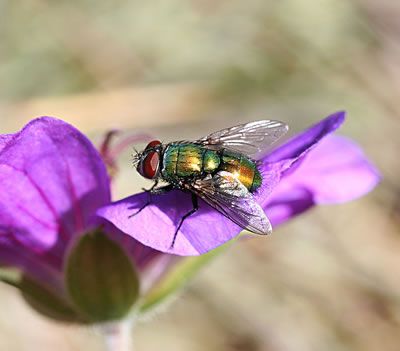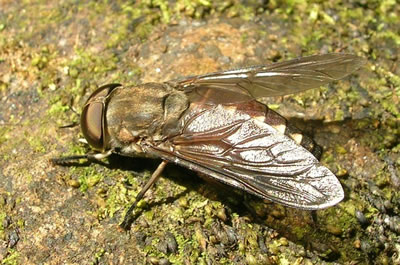Flies

Facts about creatures
- Home
- Animal Classification
- Animal Habitats
- Amphibians
- Arthropods
- Bats
- Birds
- Carnivorans
- Cetaceans
- Chordates
- Crustaceans
- Dinosaurs
- Diprotodonts
- Elephants
- Fish
- Golden Mole
- Insects
- Lagomorphs
- Mammals
- Mammal Teeth
- Marsupial Mole
- Metamorphosis
- Mollusks
- Primates
- Reptiles
- Rodents
- Ruminants
- Soricomorphans
- Tenrec
- Tetrapods
- Vertebrates
Flies
Flies, members of the order Diptera, are insects with one pair of wings.
“Diptera” is Greek for “two wings”.
In flies, the hind wings have been modified to become halteres, knobbed projections that help with balance.
Some species of flies have no wings and cannot fly at all.
Flies usually have short, streamlined bodies.
They consume only liquids.
Flies undergo complete metamorphosis.
A fly larva is known as a maggot.
House flies, mosquitoes, gnats and midges are all flies.
In English, the word “fly” originally meant any flying insect. That’s why some insects that aren’t true flies have “fly” in their name – the dragonfly and the butterfly, for example.



House Fly
The house fly (Musca domestica) is the most common fly in homes throughout the world. Thus, it is sometimes called the common house fly.
It feeds on and breeds in trash, excrement and decaying flesh, which makes it a carrier of many diseases that affect humans, including typhoid fever, dysentery and cholera.
It is especially dangerous in places where sanitation is not good.
Horse Fly
The horse fly, which can grow to over two inches long, is considered a nuisance because of its painful bites. Once it pierces the skin of a human or other animal, it can continue to suck blood unless it is forced away.
In Africa, horse flies carry the parasite that causes the disease loa loa filariasis.
Green Bottle Fly
During World War I, doctors discovered that if a soldier’s wounds became infested with green bottle fly maggots, his wounds healed better than the wounds of other soliders.
Researchers learned that green bottle fly maggots secrete a substance known as allantoin, which today is used to treat deep wounds. It can also be found in cosmetics and skin creams.
Maggot therapy was employed frequently in hospitals before penicillin came into common use.